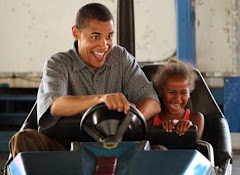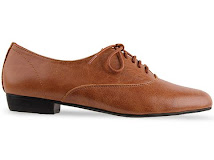Thursday, February 10, 2011
Still playing the Dozens, eh?
Most of us know playing the dozens as an African-American custom in which two competitors -- usually males -- go head to head in a competition of comedic trash talk. It’s really just two people insulting each other sometimes in lieu of fighting. Let’s call it verbal sparring.
When I was a kid we called it “capping on.” (ex. “Dag, Ms. Cortada we jus capping on each other”). In some areas it’s called “cracking on,” “ranking on,” or whatever, but I do remember the scruffiest boy in the class had the best comebacks. Sometimes it was the kid who smelled like pee, but geez homeboy was funny, he’d cut you clean.
Anyway, the term “the dozens” is believed to refer to the devaluing on the auction block of slaves who were past their prime, deformed, aged or who after years of back-breaking toil, no longer were capable of hard labor. These slaves often were sold by the dozen. In the book African American Oral Traditions in Louisiana, African American author and professor Mona Lisa Saloy writes:
"The dozens has its origins in the slave trade of New Orleans where deformed slaves—generally slaves punished with dismemberment for disobedience—were grouped in lots of a 'cheap dozen' for sale to slave owners. For a Black to be sold as part of the 'dozens' was the lowest blow possible”
Some would even add that when violence among slaves was a property crime with potentially draconian consequences. Verbal sparring became a substitute for physical contention amongst slaves. Meaning when we couldn’t physically hit one another we delivered verbal blows. Deep, right?
When I was a kid we called it “capping on.” (ex. “Dag, Ms. Cortada we jus capping on each other”). In some areas it’s called “cracking on,” “ranking on,” or whatever, but I do remember the scruffiest boy in the class had the best comebacks. Sometimes it was the kid who smelled like pee, but geez homeboy was funny, he’d cut you clean.
Anyway, the term “the dozens” is believed to refer to the devaluing on the auction block of slaves who were past their prime, deformed, aged or who after years of back-breaking toil, no longer were capable of hard labor. These slaves often were sold by the dozen. In the book African American Oral Traditions in Louisiana, African American author and professor Mona Lisa Saloy writes:
"The dozens has its origins in the slave trade of New Orleans where deformed slaves—generally slaves punished with dismemberment for disobedience—were grouped in lots of a 'cheap dozen' for sale to slave owners. For a Black to be sold as part of the 'dozens' was the lowest blow possible”
Some would even add that when violence among slaves was a property crime with potentially draconian consequences. Verbal sparring became a substitute for physical contention amongst slaves. Meaning when we couldn’t physically hit one another we delivered verbal blows. Deep, right?









-010604.jpg)



